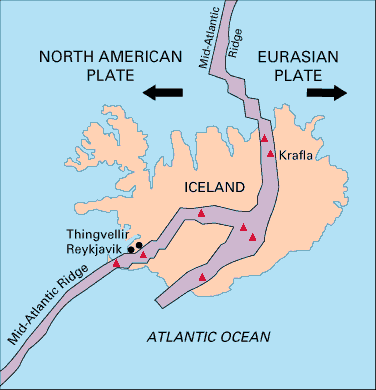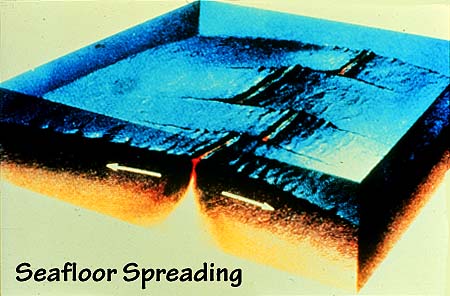


 The Mid-Ocean Ridges:Page II
The Mid-Ocean Ridges:Page II




Numerous earthquakes occur along the Mid-Ocean Ridges. These are rarely of magnitudes greater
than 7 on th riechter scale. Also the mid-ocean ridges
are the site of 90% of the worlds volcanism. Rarely the ocean ridge emerges above the sea as
in Iceland and the volcanism is prodigious with an eruption on average every 5 years.The
volcanic country of Iceland straddles the Mid-Atlantic Ridge;This
offers scientists an ideal site for studying on land the processes
also occurring along the submerged parts of a spreading ridge. Iceland is
splitting along the spreading center between the North American and Eurasian
Plates, as North America moves westward relative to Eurasia, this is shown below.


The moving plates stretch the young hot crust and crack it open, allowing cold seawater to percolate down close to the magma chamber. There it is heated where it fluxes the mantle peridotite and becomes a hot sulphide and metal-rich fluid, this rises to reach the sea floor at temperatures of up to 400 degrees C. Where this hot hydrothermal fluid emerges, it mixes with cold seawater and precipitates iron, copper, and zinc sulphides, partly as seafloor sulphide deposits and partly as a cloud of black smoke. Here it is possible to see ore deposits in the course of formation.




Composed by Rob Jacobs
© 1997